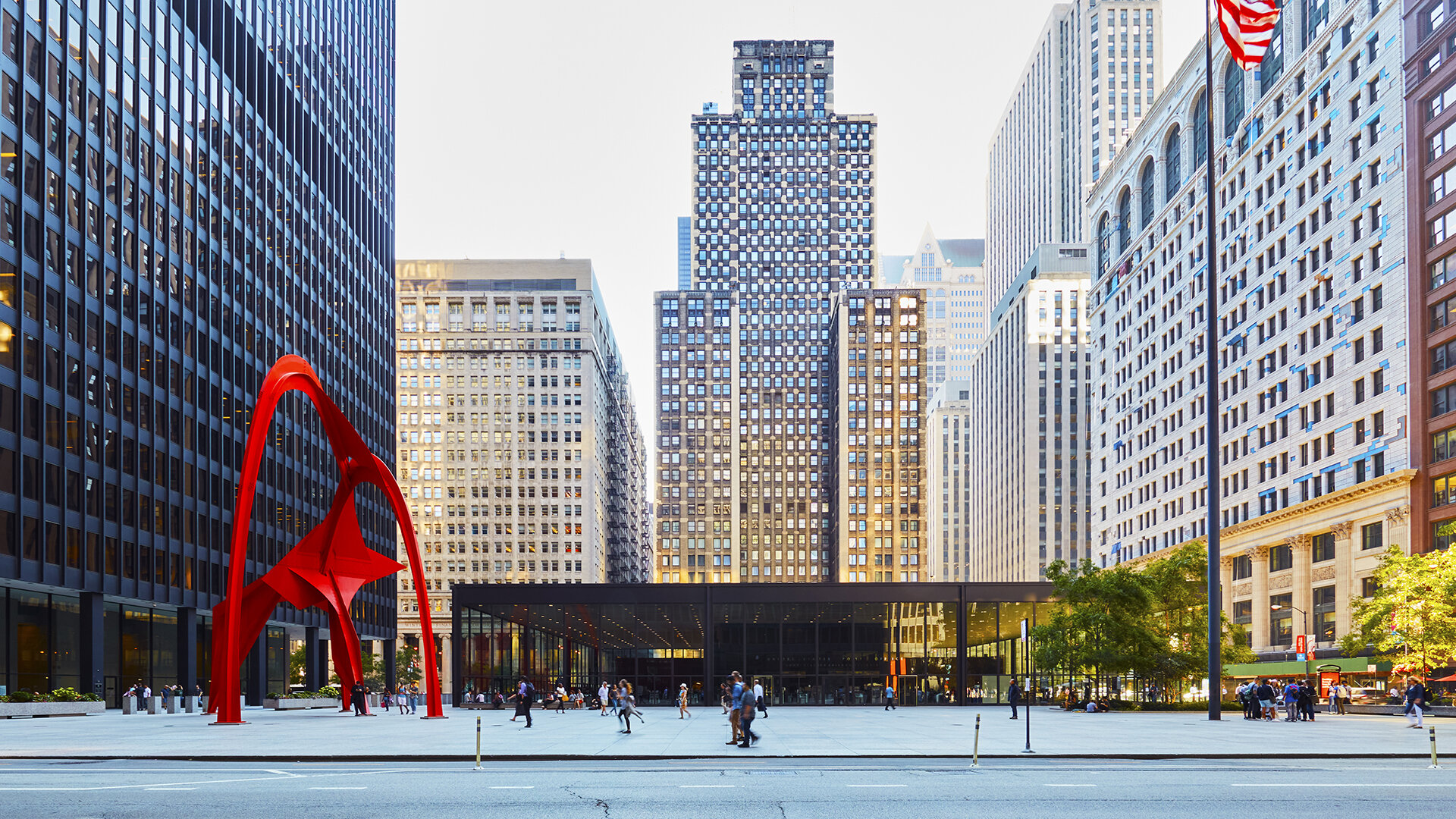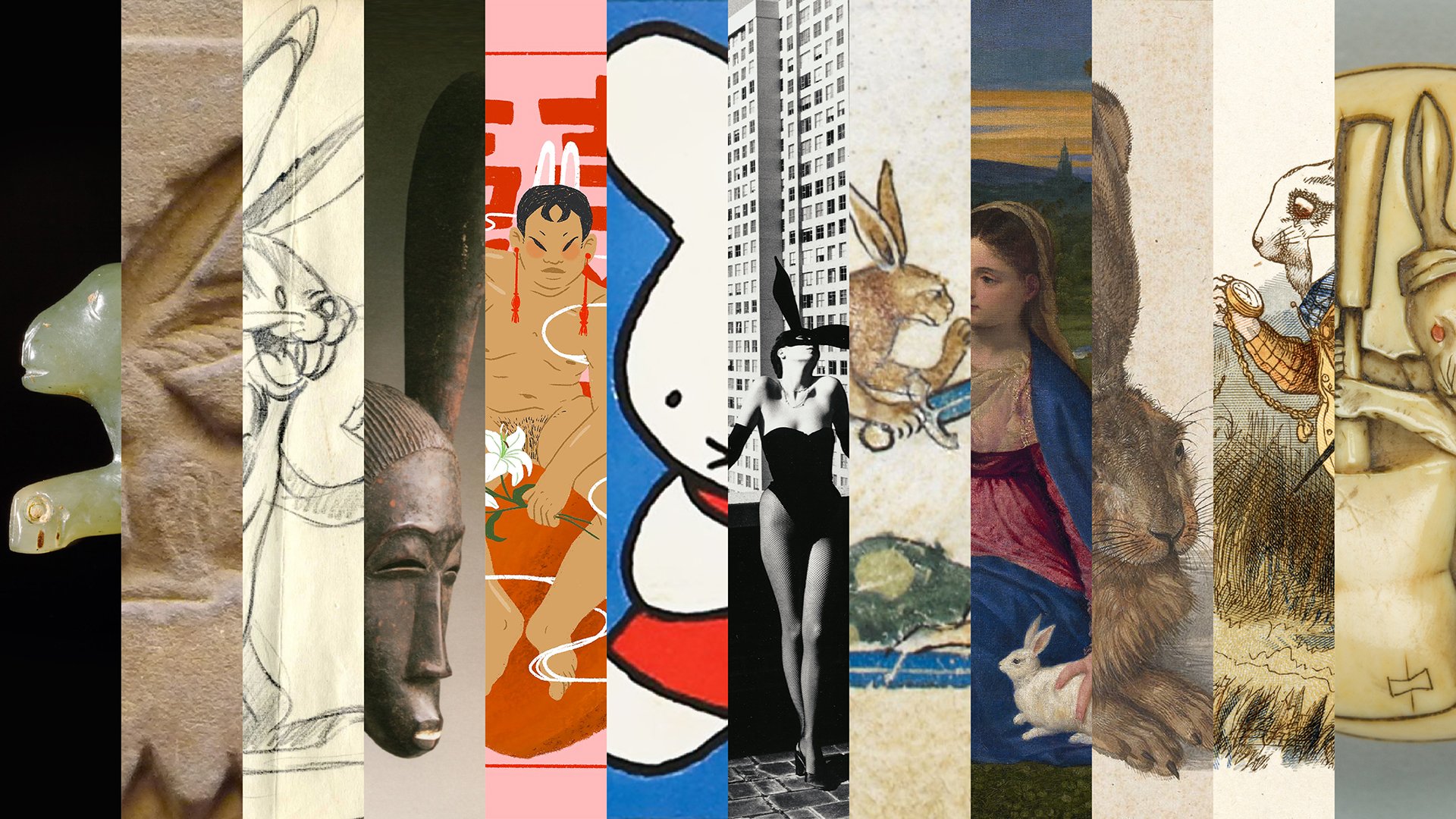About Alexander Calder, Sculptor of Air

The American artist is credited with inventing mobiles, creating movement in sculpture.
Cover photo: Flamingo, 1974, sheet metal and paint, by Alexander Calder, Federal Center Plaza, Chicago, Illinois, United States (2017). Photo by Carol Highsmith and via the Library of Congress.
Today is the recorded birthday of the late American sculptor Alexander Calder. He was born in Lawnton, Pennsylvania on this day in 1898, 123 years ago. The inventor of mobiles, Calder pioneered the use of kinetic sculptures.
Calder was born into a lineage of artists. His mother was a painter and both his father and paternal grandfather were sculptors. Initially, Calder resisted “going into the family business” but his degree in mechanical engineering eventually lead to the creation of his precise kinetic sculptures in the 1930s.
It was Dada artist and friend Marcel Duchamp who declared them mobiles, from the French word for “motion”. In response, Jean Arp named Calder’s stationary work stabiles. In 1962, Calder explained, “The mobile has actual movement in itself, while the stabile is back at the old painting idea of implied movement. You have to walk around a stabile or through it- a mobile dances in front of you.”
In 1946, the French philosopher Jean-Paul Sartre wrote for an exhibition catalogue, “The forces at work are too numerous and complicated for any human mind, even that of their creator, to be able to foresee all their combinations. For each of them Calder establishes a general fated course of movement, then abandons them to it: time, sun, heat and wind will determine each particular dance.”
Calder settled in Paris, France, in 1926, making friends of Joan Miró, Fernand Léger, and Piet Mondrian. Inspired by the Ringling Bros. Circus, Calder was first interested in performance art but a visit to Mondrian’s studio gave him a “shock” that propelled him into abstraction. While surveying Mondrian’s canvases, Calder remarked “that perhaps it would be fun to make these rectangles oscillate.”
Afterwards, Calder received commissions for a variety of large scale works across the globe. His 1969 sculpture La Grande Vitesse, in Grand Rapids, was the first public work to be subsidized by the National Endowment for the Arts, established by the U.S. Congress in 1965. The total cost of $134,000 was shared by the NEA, philanthropic foundations, local businesses, and individual citizens.
The work was greeted with mixed reviews. Critic Robert Blandford argued, “If you took a Calder and put it next to a pile of welded junk and didn’t tell the average person which was which, 99 out of 100 people wouldn’t know the difference.” Within weeks of unveiling, the sculpture was egged and spray-painted.
Grand Rapids resident, Nancy Mulnix Tweddale was chiefly responsible for bringing La Grande Vitesse to the city. “In my opinion, Calder is the greatest American artist of the 20th Century,” she proclaimed. “He did something no one else had done. He created movement in art.”














